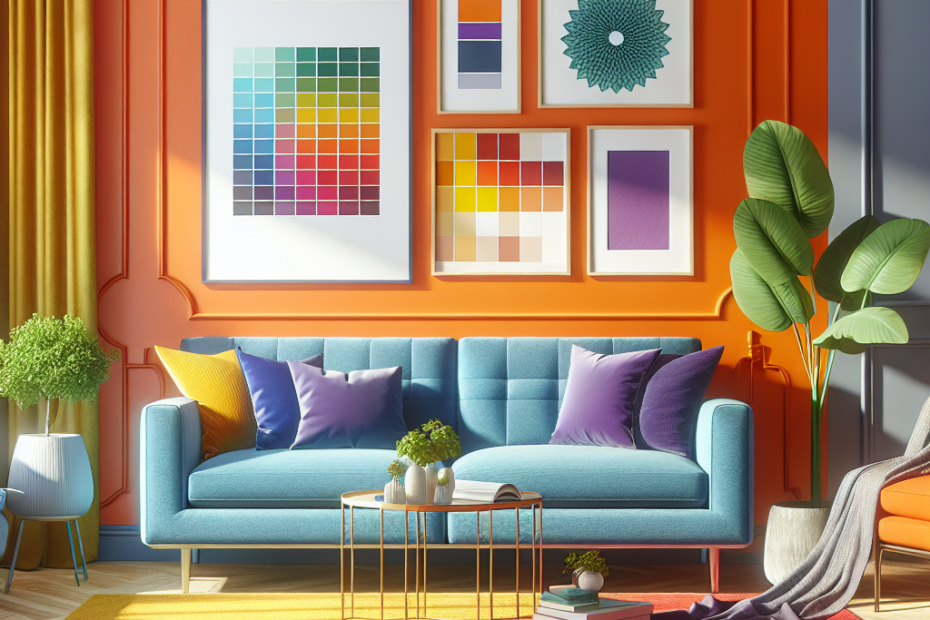When individuals embark on the journey of designing their home interiors, they often encounter the concept of complementary colors in design. Understanding how to effectively use these colors can transform any room into a harmonious masterpiece. This blog post aims to unpack the essence of complementary colors and provide readers with practical insights into using them effectively in home styling.
What are Complementary Colors?
Complementary colors are pairs of colors that, when combined, cancel each other out. This means they produce a grayscale color like white or black when combined. On the color wheel, these colors are positioned directly opposite each other. For example, blue is complementary to orange, red is complementary to green, and yellow is complementary to purple.
Using these colors together in a room can create a vibrant and balanced look that is pleasing to the eye. This combination helps in achieving contrast, making room elements stand out more pronouncedly.
The Science of Color Theory
Color theory in design, including interior decoration, hinges on human psychology and perception. According to a study by the Institute of Color Research, people make a subconscious judgment about a person, environment, or product within 90 seconds of initial viewing, and between 62% and 90% of that assessment is based on color alone. Understanding this concept is crucial for designing a space that will have the desired psychological impact.
Complementary Colors in Interior Design
In the realm of interior design, complementary colors are often used to achieve contrast and bring energy into a room. Here’s how they can be effectively applied:
- Balance and Harmony: When used effectively, complementary colors balance each other out, creating a visually appealing and harmonious look. A common approach is to use one color for larger areas like walls or flooring and a complementary color for smaller accents such as throw pillows or artworks.
- Aesthetic Appeal: Designers often recommend using a complementary color scheme in spaces where vibrancy is desired, such as living rooms or kitchens. The idea is to use one color as a dominant shade and its complement as an accent color.
- Energy and Mood: Colors like blues and oranges can bring an energetic vibe to a room, while softer pastels like a mint green with soft pink can evoke calmness and serenity.
Applying Complementary Colors
| Color Pair | Room Suggestion | Atmosphere |
|---|---|---|
| Blue and Orange | Living Room | Vibrant and Energetic |
| Red and Green | Kitchen | Bold and Dynamic |
| Yellow and Purple | Bedroom | Sophisticated and Elegant |
Creating a Complementary Color Palette
Creating a complementary color palette can be as simple as selecting two colors from opposite sides of the color wheel. However, it almost always involves experimentation to determine the proportion of each color that will achieve the desired impact.
- Start by choosing one primary base color. This will often be the more muted shade that makes up the majority of the space.
- Select its complementary color for accents, ensuring it complements rather than dominates.
- Experiment with different hues, tints, and shades to reach the desired aesthetic.
Key Takeaways
- Complementary colors are opposite on the color wheel and can enhance each other’s intensity.
- These colors can set the desired mood and atmosphere in a room, influencing perception and comfort.
- An understanding of color theory can aid in achieving a pleasing and dynamic space.
- Pairing colors like blue and orange or red and green is a common strategy to energize room dynamics.
- Experimentation is key to finding the perfect balance and harmony in home styling.
FAQ
- What are complementary colors?
- How do they affect mood and perception in a home setting?
- Are there any drawbacks to using complementary colors?
- Can complementary colors be used in any room?
- How can one experiment with complementary colors?
Complementary colors are pairs of colors located opposite each other on the color wheel, creating high contrast and vibrancy when used together.
Complementary colors can set various moods. For instance, lively colors like blue and orange can create an energetic vibe, while softer combinations can evoke tranquility.
While they can be visually arresting, using too much of both complementary colors can easily overwhelm a space. It’s important to balance them with neutral tones.
Yes, they can be used in any room; however, the choice of colors and their intensity should match the room’s function and desired ambiance.
One can start by selecting small items such as cushions or artwork to add the complementary color, gradually increasing its presence to test different balances.
